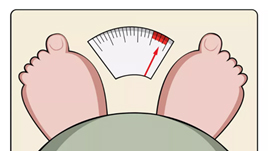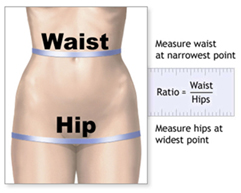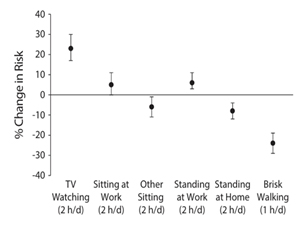Biochemistry in Health Obesity and Chronic Diseases

It has always come to our attention that many people are seeking ways to reduce their weight. Is overweight or obesity a prevalent issue in Hong Kong? Does a high BMI necessarily mean that I am fat? Does the lighter you are, the healthier you are? What are the health implications associated with excessive body weight? In this article, I will delve into these inquiries, specify the reasons for being overweight and highlight the negative impact of overweight and obesity on our health.
Prevalence of overweight & obesity in HK
In Hong Kong, more than 54% of people aged 15-84 are overweight or obese based on the Population Health Survey (PHS) 2020-22 conducted by the Department of Health. Among this population, 32.6% of persons were obese and another 22.0% were overweight. Obesity and overweight were most common among females aged 65-84 (57.0%) and among males aged 45-54 (74.6%).1
What’s wrong with Overweight or Obesity?
According to World Health Organization (WHO), overweight is a condition of excessive fat deposits and obesity is a chronic complex disease defined by excessive fat deposits that can impair health.2 Obesity increases the risk for a number of chronic diseases, such as hypertension, heart diseases, hypercholesterolaemia, diabetes mellitus, cerebrovascular disease, gall bladder disease, osteoarthritis, sleep apnoea and some types of cancer.1
The mechanism that obesity contributes to chronic disease development is due to elevated plasma free fatty acid (FFA) levels (Figure 1). FFAs cause insulin resistance and low-grade inflammation characterized by elevation of proinflammatory cytokines in blood and tissues3. Insulin resistance will lead to development of type 2 diabetes, hypertension and other atherosclerotic vascular disease. Proinflammatory cytokines play a critical role in modulating the immune system, and they trigger inflammation to fend off pathogens or repair injuries. However, excessive inflammatory cytokines production can lead to tissue damage, hemodynamic (how your blood flows through your blood vessels) changes, organ failure, chronic diseases such as autoimmune diseases, diabetes and cancer, and ultimately death.4

Figure 1: Chemical structure of different free fatty acids in the body
How to determine if I have a healthy weight, being overweight or underweight?
Body Mass Index (BMI) is a simple method for measuring the amount of our body fat and it is calculated by dividing the body weight by the square of height expressed in unit of kg/m2.
BMI = weight (kg)/ height2 (m2)
According to WHO International Obesity Task Force, BMI less than 18.5 is classified as underweight, BMI from 23.0 to less than 25.0 kg/m2 is classified as overweight and BMI 25.0 kg/m2 or above is classified as obese for the Asian (Table 1). Asian has lower cut-offs for overweight and obesity than the population in USA and Europe. The difference in criteria is based on risk of mortality determined from clinical studies.
| Classification | USA -EU | Asian Country |
|---|---|---|
| Underweight | 18.5 - 24.9 | 18.5 - 22.9 |
| Underweight | 18.5 - 24.9 | 18.5 - 22.9 |
| Overweight Pre-obese Obese class I Obese class II Obese class III |
≥25 25 - 29.9 30.0 - 34.9 35.0 - 39.9 ≥40.0 |
≥23 23 - 24.9 25 - 29.9 ≥30 - |
Large scale study comprising more than 3.6 million adults in UK showed BMI has a “J” shape association with all-cause, communicable, and non-communicable disease mortality (Figure 2)5. Non-communicable diseases refer to diseases such as cancer, cardiovascular and respiratory diseases. Being underweight, overweight and obesity are all associated with a reduction in life expectancies, with obesity playing the largest role in mortality rate5. Therefore, it is NOT the lighter, the healthier. To maintain good health, it is imperative to keep our BMI within the optimal range of 18.5 – 22.9.

Figure 2: Association between BMI and all-cause mortality among never-smokers, by sex (A) and Age (B)
However, BMI can sometimes misclassify total body fat content. For instance, athletes who are muscular have a high BMI due to muscle weighting more than fat, and will have BMIs within overweight range, even though they are not fat. There are other means for accurate measurement of adipose tissue mass but they are generally more sophisticated and expensive. Therefore, BMI is commonly used as a measure of general obesity in clinical practice.
The location of body fat matters
It is not just the amount of fat but also its distribution that determines the negative health impacts associated with obesity. Epidemiologic evidence shows that central obesity, also known as abdominal obesity contributes a higher risk than general obesity (high BMI) to many chronic diseases, including cardiovascular diseases and type 2 diabetes.6 The measurement of waist circumference is the simple means of identifying central obesity. For most Asian adults including Chinese, central obesity is defined as waist circumference ≥ 90cm for men and ≥ 80cm for women.7 Another indicator to measure central obesity is the waist-to-hip ratio (Figure 3). For Asian populations, waist-to-hip ratio ≥ 0.90 for men and ≥ 0.85 for women signify central obesity.8

Figure 3: Waist -to-hip ratio
What are the causes of obesity?
Overweight and obesity occurs when energy intake from food exceeds energy expenditure, and thus leading to an energy imbalance in the body. Excess energy will be stored as fat in the body resulting in weight gain. Although there are various factors such as poor dietary patterns, sedentary lifestyle, genetics, medications, sleep deprivation and gut microbiota that may cause weight gain, different studies have confirmed that poor dietary habits and lack of exercise or physical activity are the key factors leading to overweight and obesity.9,10
One aspect of dietary risk is high intake of energy dense, nutrient poor (EDNP) food and drinks. Energy dense, nutrient poor food refers to those that provide a high number of calories with little to no essential nutrients such as vitamins, minerals, fiber, and protein. Candy, chocolate, cake, biscuits, sweet and salty snacks, sugar-sweetened and artificially sweetened drinks, as well as alcoholic drinks, were classified as EDNP food and drinks.
Large scale studies with more than 200,000 participants followed up to 40 years have shown that over consumption of energy-dense food will cause significant weight gain (Figure 4).11 Moreover, a sedentary lifestyle involving too much time on watching TV or sitting at work or home also play a key role in increasing the risk of becoming obese (Figure 5).10

Figure 4: Relationships Between Changes in Food and Beverage Consumption and Weight Change Every 4 Years in the Nurses’ Health Study (NHS; 1986–2006), the NHS II (1991–2003), and the Health Professionals Follow-up Study (HPFS; 1986–2006): United States

Figure 5: Percentage Changes in the Risk of Developing Obesity Associated with Television Watching, Other Sedentary Behaviors, and Walking Among Non-obese Women in the Nurses’ Health Study: United States, 1992–1998
How can we manage obesity?
Dietary modifications play a pivotal role in addressing overweight and obesity. Amidst the various dietary approaches in the market aimed at weight reduction, the tasks of selecting the most fitting option can often be overwhelming. Join me in the forthcoming article as I will look into several common dietary regimens designed for weight control, and help you to choose the suitable one for you. Stay tuned for more information.
References
- Centre for Health Protection (CHP), Department of Health, HKSAR. https://www.chp.gov.hk/en/healthtopics/content/25/8802.html
- World Health Organization Obesity and Overweight. https://www.who.int/news-room/fact-sheets/detail/obesity-and-overweight
- Boden Guenther. Obesity and Free Fatty Acids. Endocrinology and Metabolism Clinics of North America Volume 37, Issue 3, September 2008, Pg 635-646
- Chen L., Deng Huidan, Cui Hengmin, Fang Jing, Zuo Zhicai, Deng Junliang, Li Yinglun, Wang Xun, Zhao Ling. Inflammatory responses and inflammation-associated diseases in organs. Oncotarget, 2018, Vol. 9, (No. 6), pp: 7204-7218
- Bhaskaran Krishnan, Dos-Santos-Silva Isabel, Leon David A, Douglas J Ian, Smeeth Liam. Association of BMI with overall and cause-specific mortality: a population-based cohort study of 3·6 million adults in the UK. Lancet Diabetes Endocrinology 2018; 6: 944–53
- Fu Jingyuan, Hofker Marten & Wijmenga Cisca. Apple or Pear: Size and Shape Matter. Cell Metabolism 21, April 7, 2015. http://dx.doi.org/10.1016/j.cmet.2015.03.016
- Non-Communicable Diseases Watch, August 2018. Centre for Health Protection, Department of Health, HKSAR. https://www.chp.gov.hk/files/pdf/ncd_watch_august_2018.pdf
- Waist Circumference and Waist-Hip Ratio. Report of a WHO Expert Consultation, Geneva, 8-11 December 2008. Geneva: World Health Organization, 2011.
- Omer Tahir. The causes of obesity: an in-depth review. Advances in Obesity, Weight Management & Control 2020; 10(4):90-94
- Hruby A., Manson JoAnn E., Qi Lu, Malik Vasanti S., Rimm Eric B., Sun Qi, Willett Walter C., and Hu Frank B. Determinants and Consequences of Obesity. American Journal of Public Health 2016;106:1656-1662
By K.L. Tang, Nutritionist, HKBU chemistry alumnus